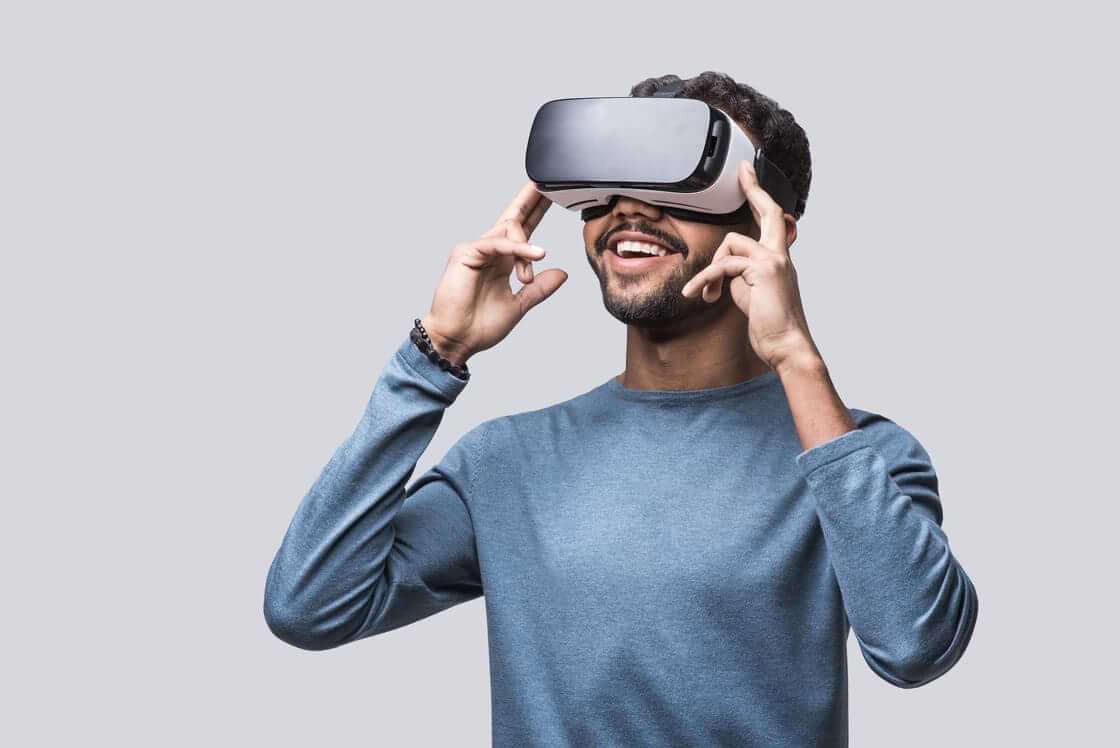
© kite_rin /stock.adobe.com
The movie screen on your wall warps into an oval, a new cinematographic technique unlocked by watching TV through smart glasses. Extended family from all around the country sits in your living room as holographic “avatars.”
Glancing to the side, you see your aunt Denice’s persona. A delightfully facetious woman, Denice looks like a terrifying orc from The Lord of the Rings. She chose that avatar in protest because that was the movie she wanted to watch.
The monster’s gray, veiny hand with claws reaches out, and, after a second’s delay, a cup of ramen appears in her hand, loading into her appearance as she interacts with it.
One of your cousins pings in the chat box asking to enter, and the group lets him in.
He apologizes for being late. Your father asks, “Was there traffic on your commute from work? My cat stood in the way of my couch today, horrible traffic for me as well.” Your cousin is one of the few Americans who go in person to his office. Your mother asks, “How are you? How’s the new job?”
Denice groans, startling your cousin when he sees her monstrous avatar. “Might as well pause the movie if you’re all going to drone on!”
This short story of a family gathering represents what Meta and other companies envision for the future of technology. The holy grail for these businesses does not only include virtual reality (VR) but also “mixed reality,” or augmented reality (AR).
While Meta tries to stoke enthusiasm for the “metaverse,” they ultimately want to join physical reality with the virtual one. As long as people wear the right AR glasses, holograms like in Star Wars will become everyday.
But is this really the future? Or is this vision a trillion-dollar pipe dream?
What is mixed reality?
Mixed reality allows the user to see through their headset to the real world with virtual images imposed on it. For now, Meta leads the way in what is (relatively) accessible to the consumer for augmented reality. While their virtual reality headset focuses on the metaverse, they released their current-generation headset, the Meta Quest Pro, last week for pre-orders, which uses mixed reality.
Meta Quest Pro is $1500
The Meta Quest Pro reviewers who tried the product in a demo gave mixed reviews.
Meta’s goal of having “lots of people to communicate, work and create” with mixed reality has “never felt further away,” according to Geoffrey A. Fowler at the Washington Post. Scott Stein at CNET said he “could see it being surprisingly effective” in a select few areas. Sherri Smith for LaptopMag writes that “the future of VR absolutely lies in MR [mixed reality].”
But everyone, even Meta CEO Mark Zuckerberg, mostly acknowledges that this product is a stepping stone.
It’s received significant critique—its short battery life and extravagant price point—but it’s groundbreaking feature is face tracking.
Meta Quest Pro’s face tracking
Arguably the biggest improvement for user-to-user interaction is the new face cameras that track facial expressions and impose them in real-time onto virtual avatars. This includes eye tracking. While the technology needs improvement, it’s leaps and bounds above anything else in the accessible field. The Quest Pro headset will track mouth movement, eyebrows, eye movements, grins, laughs, puffed-out cheeks, and everything else that’s large enough to process (aside from sticking your tongue out).
This allows people to make eye contact and nonverbally communicate—an essential stepping stone for feeling the presence of another person.
There are other applications. Mixed reality might one day replace the need for TV screens since they could impose screens mid-air anywhere in our field of vision. One of the demos showed three massive hologram computer monitors that came from one laptop. The “screens” were suspended in the air.
Meta has also teamed up with Microsoft to equip Microsoft Teams with virtual business meetings. Instead of 2D meetings like in Zoom, they hope to offer a holographic mixed reality experience.
Most reviews focus on the impressive new specs, which I’ll spare you from listing, and its face tracking. But the Meta Quest Pro’s biggest win also inevitably raises the greatest pushback.
Meta Quest Pro privacy concerns
While many complain about the discomfort, impracticality, or the lingering “uncanny valley,” everyone seems mostly concerned about privacy issues. Rightfully so. Who trusts a company that makes money by selling your private data with your face and your every expression?
Meta says that the data is stored locally in the headset, then later deleted. But what about how apps use the data?
Meta is already experimenting with advertisements that use face tracking. They will be able to consider the success of an ad by measuring our nonverbal reactions. In other words, in the future, they might track whether you smile at the cheesy insurance commercial or track your eyes to see if you get distracted. You can also apparently allow them to keep more of your information, which helps “personalize” your experience. That sounds like jargon for “ads using face tracking data.”
One expert says, “When you can literally see a person look at an ad for a watch, glance for ten seconds, smile, and ponder whether they can afford it, that’s providing more information than ever before.”
For now, Meta assures us that they never take raw data of your face. Face tracking is turned off by default when you get the headset.
The future of mixed reality
This technology is so near its beginning stages of development that any prediction will be a guess. Mark Zuckerberg may not be particularly personable or in touch, but he’s no fool. Meta’s calculated gamble on the metaverse may pay off five to ten years down the line. For a while, however, they will continue to sink billions into this sector.
I’ll give one relevant piece of information on the possible success of Meta’s future. If they want to create mixed reality glasses more powerful than the Meta Quest Pro, they will need much better computing power. And they will reach the physical limit of how small they can make processors soon (the smallest transistors right now are about two times the size of an atom). We can’t keep shrinking computers forever.
So, it’s likely that we will never get high-definition, real-time virtual reality that is indistinguishable from the physical world. Unless we make breakthroughs in quantum computing, we will probably never have Ready Player One.
In the infancy of mixed reality technology, some will brush it aside as unhelpful, naive, and doomed to fail. Others believe it’s a rapidly advancing frontier that will fundamentally change the human experience.
I don’t pretend to make any predictions, but the possibility of this future should make us pause and consider the tradeoffs of incorporating this realized science fiction into our future lives.
Keep watch on the metaverse
I’ve written that the porn industry drives development in the virtual reality space. Though pornography is endemic in America, a particularly intense pornography problem grips Japan. A mostly culture-specific phenomenon has appeared there called Hikikomori. This term refers to a large body of young Japanese males that, overwhelmed with shame and anxiety, hardly ever leave the indoors and never get a job. Because of honor, their parents will usually provide for them financially for decades. The Hikikomori often immerse themselves in video games.
There is a slew of complex reasons for this rise in social reclusion. But basically, technology probably makes it worse. This acts as a parallel for the advancements of the metaverse. People that already have social ailments may become easily addicted to new VR and MR.
I suspect that leaps in VR and MR technology may make society worse on the whole for the general public, though it’s hard to say because nearly everyone will use it in moderation. However, I’m almost certain that leaps in this technology will make loneliness in socially anxious people worse.
Viewed another way, maybe VR and MR could provide support for needy people and act as a bridge back to real social connections.
As is usually the case, technology is not the root cause of societal issues, but it does exacerbate them. Technology is driven by our desires, the good ones and the bad. Most healthy adults can handle social media without falling into a mental disorder, but a percentage of the population will become addicted and will worsen their anxiety, especially teens.
Consider all this in relation to VR and MR. As wise believers, we can decide if it’s something we even want to support.












